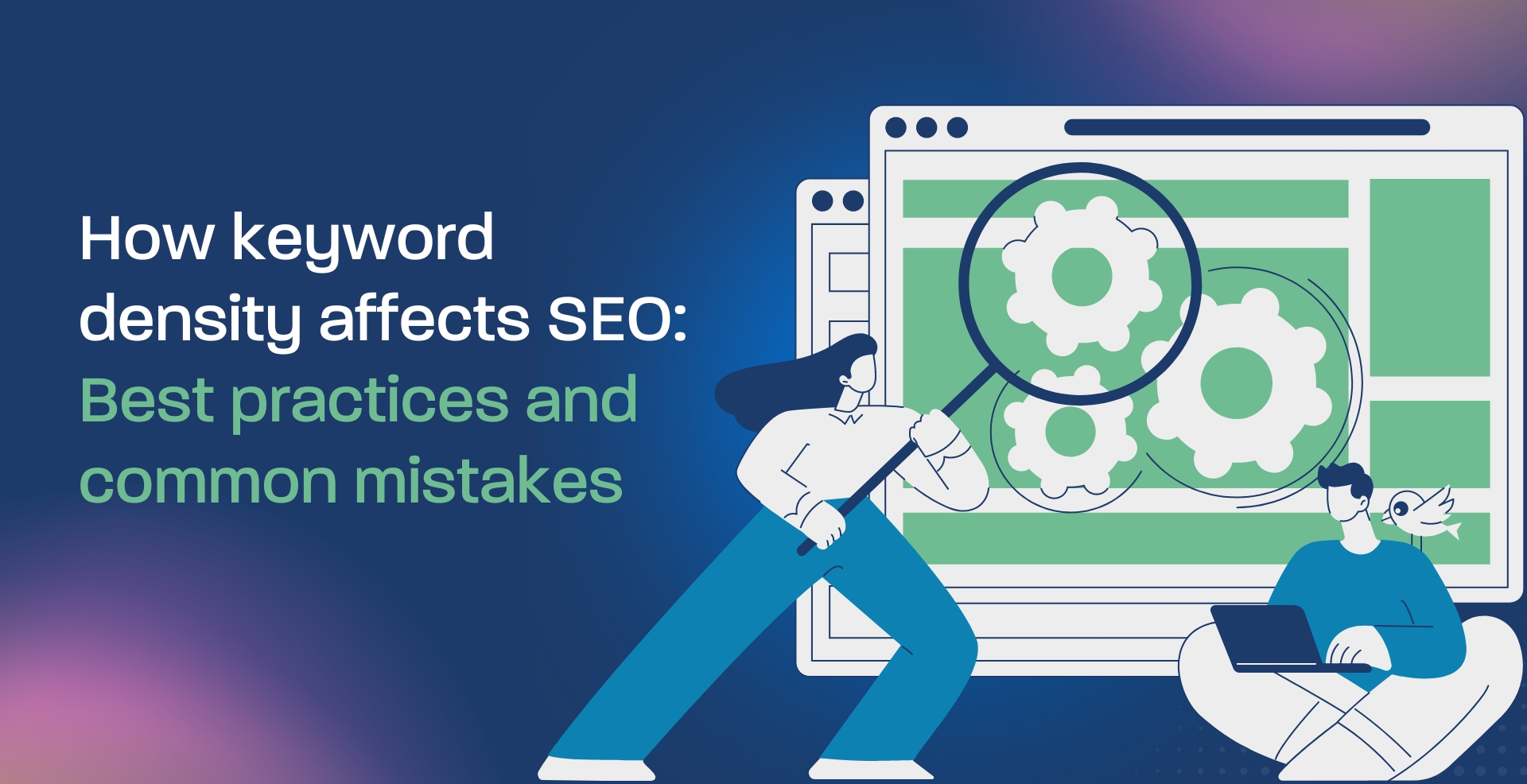In today’s digital world, websites tend to multiply by the second. Search Engine Optimization (SEO) is a digital marketing strategy aimed at improving a website’s visibility on search engines like Google, Bing, and Yahoo that help us stand out of the crowd! This strategy revolves around a series of techniques and practices carefully crafted to improve a website’s visibility, thereby influencing its ranking in search engine results pages (SERPs).
Think of your website as a hidden treasure in a busy market. Your site may be amazing, but if people can’t find it easily, its greatness will go unnoticed. Herein lies the fundamental role of SEO – it acts as the virtual guide, directing online users to your website by augmenting its visibility and positioning it prominently within search engine results.
The key determinant of a website’s digital triumph lies in its ranking on SERPs; the higher the position, the greater the chance of attracting organic traffic and securing invaluable exposure. An easy saying to go by, from our company’s SEO Head is, “You make Google’s life easier and Google will make your life easier!” The same goes for all search engines.
Let’s look into some common SEO mistakes that can be made which will impact your website’s performance.
1. Lack of Keyword Strategy
It’s a common SEO mistake to undervalue or mismanage the use of keywords. Some marketers, in their zealous quest for better rankings, resort to stuffing their content with keywords or aimlessly targeting broad phrases, hoping for a miraculous elevation in search rankings. However, this misguided approach usually leads to adverse outcomes: not only does it compromise the user’s experience, but it also attracts penalties from discerning search engine algorithms.
Keyword stuffing, an ill-fated tactic, often results in content that feels forced, unnatural, and lacking in substance. It undermines the user’s journey through a website, creating a disjointed and often frustrating experience. Furthermore, search engines have evolved to detect and penalize such practices, adversely affecting a website’s ranking and visibility in search results.
Best practices
To mitigate these pitfalls, a comprehensive and well-thought-out keyword strategy is essential. This begins with meticulous keyword research. Rather than fixating on generic or highly competitive keywords which is a common SEO mistake, focus on long-tail keywords. These phrases are more specific and targeted, better aligning with user intent and search queries.
Long-tail keywords may have lower search volumes compared to broad keywords, but they boast higher conversion rates. They cater to more refined user queries, directing traffic to your site that is more likely to engage and convert. Integrating these well-researched, long-tail keywords naturally into your content ensures a seamless blend between user expectations and the website’s offerings.
The key to a successful keyword strategy in SEO lies in quality over quantity. Evolve beyond the antiquated practice of keyword stuffing or targeting broad, generic phrases. Instead, focus on the judicious use of well-researched, long-tail keywords that speak directly to user needs. By harmonizing user intent with precisely integrated keywords, websites can elevate their rankings organically and ensure a superior user experience, ultimately achieving the coveted position ontop search engine results pages (SERPs).

2. Poor On-Page Optimization
On-page SEO elements are the bedrock of a well-optimized website. These elements hold immense importance in the eyes of search engines. Ignoring or mismanaging these crucial on-page components which is a common SEO mistake can drastically affect a website’s visibility and ranking in search results.
- Title tags: These HTML elements represent the title of a web page and provide search engines and users with an idea of the page’s content.
- Meta descriptions: These summaries, visible on search engine result pages (SERPs), describe the content of a webpage. They serve as an invitation to users to click on the link.
- Headers: Organized using HTML (H1 to H6), headers define the hierarchy of content on a webpage. They offer structure to the information, making it more readable for both users and search engines.
- URL structures: The URL of a webpage should ideally be concise, descriptive, and contain relevant keywords, aiding search engines in understanding the content and users in navigating the site.
Best practices
- Relevance and clarity: Each on-page element should be relevant to the content on the page and convey a clear message to both users and search engines.
- Mobile responsiveness: With the increasing use of mobile devices, ensuring that your website is responsive and displays properly on different screen sizes is paramount. Google’s algorithms favor mobile-friendly websites in ranking.
- Page loading speed: Users prefer websites that load quickly. Page speed is a critical factor in user experience, and search engines consider it when determining rankings. Minimizing image sizes, leveraging browser caching, and optimizing code can help enhance page loading speed.
By adhering to these best practices, website owners can significantly improve their on-page optimization, ensuring better visibility, and higher rankings in search engine results.
3. Lack of Quality Content
Quality content that lacks substance or uniqueness can significantly impact a website’s visibility, engagement metrics, and overall search engine rankings. Search engines are adept at recognizing and rewarding valuable content that fulfills users’ queries effectively. Thin, duplicated, or irrelevant content diminishes a site’s credibility in the eyes of search engines and users alike. Such content can lead to decreased organic traffic, higher bounce rates, and diminished authority within the digital landscape.
Neglecting the quality of your website’s content is a surefire way to impede its success in SEO. Content that lacks depth, and originality, or is simply duplicated across the web, significantly impacts a site’s visibility and engagement, making it challenging to secure higher positions in search engine results.
Think about content diversity for a bigger picture for the audience. Think ‘Topic-clustering’ – Targeting keyword/s with a blog post enhances SEO by aligning content with user search queries, improving visibility and driving targeted traffic to your site.
Best practices
Start by ensuring your content offers real value and uniqueness that captivates your audience’s attention. Relevant keywords strategically added within the content, is key to enhancing its visibility in search results. Additionally, utilizing various catchy elements such as images, videos, and infographics enriches the user experience and improves engagement metrics.
However, quality content isn’t a one-time affair and needs regular check-ups by professionals. Consistently updating and refreshing your content is crucial to ensure its relevance and usefulness over time. By keeping it current and aligned with user expectations, you maintain its appeal to both visitors and search engines, thereby sustaining your site’s SEO performance.
4. Ignoring Technical SEO
Technical SEO involves many important factors impacting a website’s chances of appearing in Searches. Ignoring or neglecting these pivotal technical components can significantly hinder the website’s performance in search engine result pages (SERPs). Technical SEO delves into fundamental structures and functionalities that facilitate search engine crawlers to comprehend and index website content effectively. Some of the following technical SEO issues create a good base:-
- Site structure: A well-organized and coherent site structure enhances user experience and search engine crawlability. A clear and hierarchical arrangement of web pages enables search engines to navigate through content seamlessly, ensuring better indexing and visibility. Arrange web pages logically, employing clear hierarchies and intuitive navigation structures.
- Crawlability and indexing: Search engine crawlers must easily access and navigate the website’s pages. Issues such as blocked resources, excessive use of no-index tags, or complex URL structures can impede proper crawling and indexing, resulting in incomplete or inadequate website visibility on search engines.
- Page speed optimization: Page loading speed significantly impacts user experience and SEO performance. Slow-loading pages can lead to higher bounce rates and adversely affect rankings. Optimizing elements like images, leveraging browser caching, and minimizing unnecessary code can substantially enhance page load times.
- Rectifying broken links: Broken links or dead-end URLs negatively affect user experience and hinder search engine crawlers from effectively indexing website content. Regularly auditing and rectifying broken links help maintain a healthy website structure and improve overall SEO performance.
- Schema markup implementation: Schema markup, or structured data markup, aids search engines in understanding website content with ease. It provides additional context and details about the content, enabling rich snippets and enhancing the visibility of search results.
- Alt Tags and Noindex Tags: Alt tags aid search engines in understanding images, boosting SEO and accessibility, while noindex tags prevent specific pages from being indexed, focusing search visibility on prioritized content.
- XML Sitemaps: Generating XML sitemaps offers a roadmap for search engine crawlers, guiding them to navigate and index the essential pages of a website efficiently. A well-structured XML sitemap assists in highlighting priority pages, ensuring their prompt indexing by search engines.
Addressing these technical aspects of common SEO problems plays a pivotal role in improving website visibility. These will enable it to rank favorably on search engine results, and augment its overall online presence.
5. Lack of Backlink Strategy
Backlinks stand as a testament to a website’s credibility and authority. These are essentially digital endorsements, showcasing trust, and reliability in the eyes of search engines. However, neglecting to devise a comprehensive backlink strategy or underestimating their quality can significantly impact a website’s ranking and visibility in search results. Although Google states it otherwise, the relevant and niche backlinks will help you rank higher with ease.
Backlinks, also known as inbound or incoming links, are external hyperlinks that direct users from one website to another. When another credible site links back to yours, it’s akin to receiving a vote of confidence or a recommendation. Search engines perceive these links as signals of a website’s relevance, authority, and trustworthiness within a specific niche or industry.
Impact of Neglecting Backlink Quality
The adage “quality over quantity” holds paramount significance in the realm of backlink building. Acquiring numerous backlinks from low-quality or irrelevant websites can potentially harm a website’s reputation in the eyes of search engines like Google. Such links are often viewed as manipulative attempts to influence rankings rather than genuine validations of quality content.
Best practices
- Embrace organic link building: Engage in authentic practices that naturally attract backlinks. Crafting high-quality, informative content that appeals to your target audience can encourage other websites to link to your content voluntarily.
- Guest blogging: Collaborate with credible websites within your niche and offer to contribute guest articles. This not only showcases your expertise but also allows you to earn backlinks from authoritative sites.
- Relationship building: Forge relationships with influencers, industry experts, and relevant websites. Establishing connections and providing value can lead to natural backlink opportunities.
- Backlink monitoring: Regularly assess the quality of your existing backlinks. Tools like Moz, Ahrefs, or SEMrush can help in analyzing backlink profiles, identifying toxic links, and addressing issues promptly.
- Diversify anchor texts: When acquiring backlinks, aim for a diverse set of anchor texts. Utilizing various keywords or phrases can appear more organic and less manipulative to search engines.
- Focus on relevancy: Seek backlinks from websites that are relevant to your industry or niche. Links from related sources are often valued higher by search engines.
A well-executed backlink strategy is an indispensable component of a robust SEO ranking-factor approach. By fostering genuine, high-quality backlinks through strategic practices like guest blogging, relationship building, and vigilant backlink monitoring, websites can enhance their authority, and credibility, and ultimately improve their rankings on search engine result pages (SERPs).

6. Failure to Track and Analyze
Neglecting to monitor and analyze SEO performance and/or SEO errors can significantly affect your understanding of how effective your strategies are. Ignorance may ultimately hinder further optimization efforts. When you don’t track and assess the outcomes of your SEO initiatives, you lose valuable insights into what works, what doesn’t, and where improvements are necessary.
SEO is an ever-evolving landscape, and without tracking and analyzing the performance metrics, it’s like navigating through a dense fog without a compass. Understanding how your website performs in search engine rankings, the traffic it attracts, and user behavior on your site provides critical data for refining and enhancing your SEO strategies. Without this knowledge, you risk blindly moving forward, unaware of potential pitfalls or opportunities for growth.

Best practices for effective tracking and analysis
Leveraging advanced analytical tools like Google Analytics, Google Search Console, and other SEO software is paramount. These tools offer a wealth of data that can help you gauge the effectiveness of your SEO efforts. Here’s how to make the most of them:
- Key metric identification: Identify and track essential metrics such as organic traffic, keyword performance, bounce rates, conversion rates, click through rates, and user engagement metrics. These metrics offer insights into what aspects of your SEO strategy are working well and what needs improvement.
- Regular reporting: Create a reporting schedule to regularly review and analyze the gathered data. Whether it’s weekly, monthly, or quarterly, consistent analysis helps in spotting trends and making informed decisions based on long-term data patterns for the pages on your site.
- Behavioral analysis: Dive deeper into user behavior metrics to understand how visitors interact with your site. Analyzing user flow, popular pages, and the time spent on your site can guide content optimization and user experience improvements.
- Competitor analysis: Don’t overlook analyzing your competitors’ SEO strategies. Tools such as SEMrush or Ahrefs can provide valuable insights into competitor performance, keyword rankings, and backlink profiles, enabling you to refine your strategy.
- Adaptation and optimization: Use the insights gained from analysis to adapt and optimize your SEO strategy. If certain keywords are performing exceptionally well, capitalize on them. If a page has high bounce rates, it might need content improvements or better user engagement elements.
Remember, tracking and analyzing SEO metrics isn’t a one-time task but an ongoing process. Mobile First Indexing is a crucial theory to keep in check for every mobile user! Continual evaluation and adjustment based on data insights are key to maintaining and improving your website’s search visibility and ranking.
Whisper to search engines: ‘You scratch my back I scratch yours.’ Thanks to AI you can also search for: ‘How to fix SEO issues?’
Avoiding common search engine optimization issues is fundamental for a successful SEO strategy. By adopting the best practices marketers can substantially boost their website’s visibility and achieve sustained success in the digital landscape:-
- Focus on strategic keyword usage
- On-page optimization
- Quality content creation
- Site speed
- Technical SEO enhancement
- Robust backlink strategies
- and Track and analyze.




